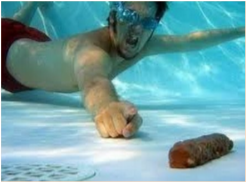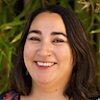Lab 8: Membrane Filtration
( \newcommand{\kernel}{\mathrm{null}\,}\)
is there poop in your water?
Safe drinking water is a problem for nearly 1 billion people worldwide. Diarrhea caused by drinking contaminated water is still a leading cause of illness and death among infants and children in the developing world. Over 1000 children die every day as a result of diseases that cause diarrhea. More children die from diarrheal illnesses such as cholera, dysentery, and typhoid fever than from HIV/AIDS and malaria combined.
This is primarily caused by fecal contamination of open water. Certain members of the Enterobacteriaceae family such as Escherichia coli, Klebsiella pneumoniae, and Enterobacter aerogenes are relatively abundant in feces and easy to detect. Therefore, these organisms are used as an indicator species when testing water for fecal contamination. These bacteria are gram-negative, facultative anaerobes that are able to ferment lactose to produce large amounts of acid and gas. Bacteria that possess these qualities are called coliform. Once the presence of coliform bacteria is detected in a water source, further tests are done to determine if more dangerous fecal-borne pathogens are present.
Membrane filtration is a technique for testing water samples. In this procedure, water is drawn through a special porous membrane designed to trap microorganisms larger than 0.45 μm. Afterward, the filter is applied to the surface of Endo agar plates and incubated for 24 hours. Endo agar is a selective media that encourages gram-negative bacterial growth and inhibits gram-positive growth. It also contains lactose for fermentation and a dye to indicate pH changes. Coliform colonies typically appear with a gold/metallic sheen.
After incubation, all metallic colonies are counted and are used to calculate the number of coliform colonies/volume filtered using the following formula:
total coliformsvolume filtered
A countable plate has 20-200 coliform colonies.
Complete the following experiment working as a pair:
1. Label 2 Endo agar plates.
2. Filter 100 mL. of control and sample water that you have been provided through a filter (filter needs to be changed between each sample).
3. Using sterile forceps, place the filter on the filter housing.
4. Clamp the top half of the assembly.
5. Pour the water inside and open the vacuum.
6. Once all the water is passed through close the vacuum, remove the top half of the filter.
7. With sterile forceps, remove the filter and place it in the middle of the Endo agar plate.


